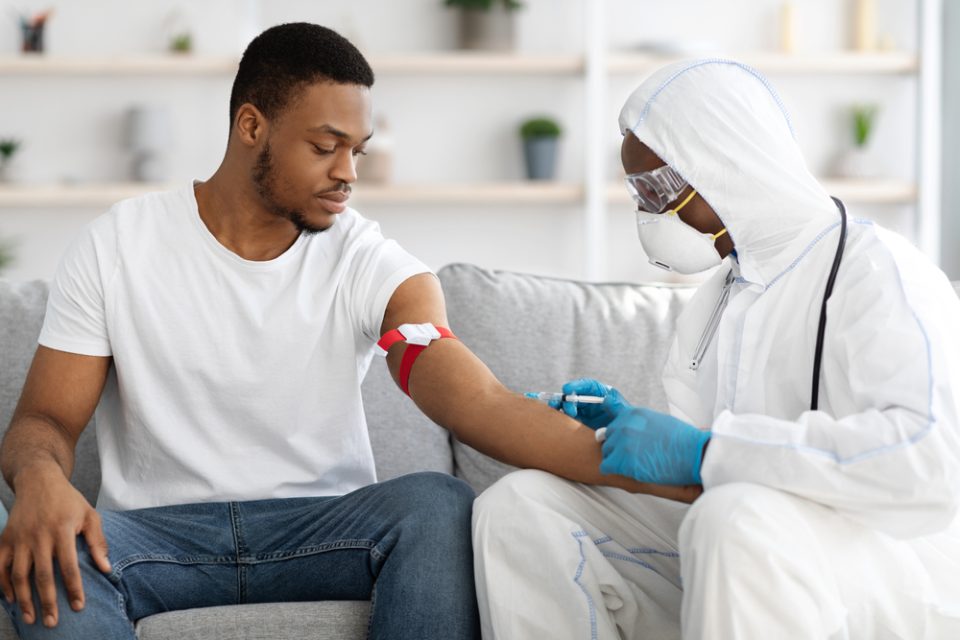Staying ahead of COVID-19: Why updated vaccines matter in 2024-2025

Current state of COVID-19
The COVID-19 landscape remains dynamic, with new variants appearing and spreading across the globe. The FDA’s approval of updated mRNA vaccines in August 2024 was an important step to maintain protection against current strains, especially the Omicron variant KP.2. These advancements come as the world navigates the complexities of ongoing viral mutations and their implications for public health.
Understanding viral evolution
Variant development
Viruses naturally mutate over time, and COVID-19 is no exception. Mutations can impact how a virus spreads, its severity, and its ability to evade immunity. This process of evolution can make previously effective vaccines less protective, leading to the need for updated formulations. The virus adapts to population immunity and other environmental pressures, such as vaccination rates and antiviral treatments. This is why monitoring these changes is essential to prevent future outbreaks and reduce hospitalizations.
Current variants
The Omicron variant has remained a dominant force in the global COVID-19 scene. Within this lineage, subvariants like KP.2, KP.2.3, and the more recent KP.3 have emerged, each with unique characteristics and spread patterns. While KP.2 displayed a rapid rate of transmission, KP.2.3 showed a potential for further immune evasion. The new KP.3.1.1 subvariant has sparked concern due to its increased transmissibility and potential impact on vaccine effectiveness, highlighting the need for timely updates to vaccination strategies. Regional variations in variant spread continue to challenge public health efforts, emphasizing the need for adaptive approaches.
Vaccination updates
2024-2025 recommendations
The 2024-2025 COVID-19 vaccination guidelines underscore the importance of universal eligibility starting from six months of age. The new vaccines are designed to target the most prevalent strains, including the Omicron KP.2 subvariant and its descendants. Timing considerations are key; individuals should consult healthcare providers to ensure they receive doses at optimal intervals. Dosing schedules and administration guidelines have been tailored to address the changing nature of the virus and maximize protection.
Scientific rationale
The updated vaccines aim to elicit a strong antibody response that is effective against targeted variants. Cross-protection—where immunity to one variant provides some defense against others—remains a crucial aspect of these new formulations. While no vaccine is 100% effective, these updates significantly reduce the likelihood of severe illness, hospitalization, and long-term health complications. The duration of immunity provided by the vaccines varies, but ongoing research continues to refine the understanding of how long the protection lasts and the effectiveness against breakthrough infections.
Protection strategies
Vaccine effectiveness
The updated mRNA vaccines have demonstrated robust coverage for the strains circulating as of 2024. The protection provided by these vaccines can last for several months, but the timing of booster doses and the nature of breakthrough cases are crucial for public health planning. Studies have shown that vaccination continues to be the most effective measure against severe COVID-19 outcomes, even as the virus evolves.
Public health measures
To complement vaccination efforts, governments and health organizations have implemented a variety of public health measures. Campaigns promoting vaccine access, community protection strategies, and preparedness of healthcare systems are critical. Monitoring systems help track new cases and identify outbreaks quickly, enabling swift responses. Public compliance and awareness, driven by education and community programs, play a significant role in curbing the spread of COVID-19.
Important considerations
Risk factors
Certain populations face higher risks of severe illness or complications from COVID-19. Age, medical conditions like diabetes and heart disease, previous infection history, and current vaccination status all play a role in determining an individual’s risk level. Environmental factors such as crowding and air quality also contribute to exposure rates. Understanding these factors helps tailor vaccination and prevention strategies to specific groups, maximizing overall effectiveness.
Timing guidelines
For optimal protection, recommended intervals between vaccine doses have been updated based on emerging data. Age-specific timing and seasonal considerations are also part of these guidelines, ensuring that booster doses are administered when immunity may be waning. Special populations, including pregnant individuals and those with compromised immune systems, may require tailored recommendations to maintain protection.
Research and development
Future directions
The ongoing development of universal vaccines that can target a broad range of COVID-19 variants is a priority. Research continues to focus on refining vaccine formulations, exploring new delivery systems, and enhancing the overall durability of immune responses. Efforts to monitor variants, assess treatment efficacy, and create coordinated global prevention strategies are vital for future preparedness.
Emerging technologies
Innovation in mRNA technology has proven effective, but new advancements are on the horizon. These include more sophisticated delivery methods, improved testing capabilities, and enhanced surveillance systems to detect and respond to variants quickly. Research is also focused on identifying novel treatment options to complement preventive measures.
Public health response
Community protection
Ensuring public access to vaccinations, bolstering healthcare resources, and maintaining communication strategies are essential for community-wide protection. Education initiatives keep the public informed about the importance of vaccination and current safety practices. Support systems that include healthcare access and assistance programs can help communities recover from disruptions caused by COVID-19.
Global coordination
The fight against COVID-19 requires a unified approach. International collaboration, data sharing, and resource allocation are critical to managing outbreaks and ensuring equitable vaccine distribution. Coordinated research efforts help accelerate the development of new strategies and treatments that benefit everyone, not just those in higher-income countries.
Practical guidance
Getting vaccinated
Finding vaccination locations, scheduling appointments, and understanding documentation needs are essential steps for individuals planning to get vaccinated. Insurance coverage should be verified, as some programs may offer financial assistance.
After vaccination
Post-vaccination, individuals should be aware of what to expect. Monitoring the body for side effects and managing breakthrough symptoms is crucial. Reporting any unusual reactions can help health authorities maintain safety and adapt public health responses effectively.
Conclusion
The persistent evolution of COVID-19 underscores the need for updated vaccines and a comprehensive public health strategy. By adapting to new variants and following the latest guidelines, individuals can better protect themselves and their communities. Continued scientific progress and global cooperation remain central to navigating future challenges in the pandemic landscape.












